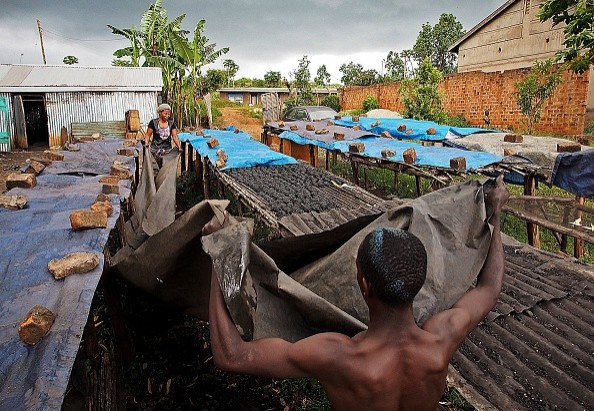Harmful algal blooms (HABs) are a major environmental problem that can affect the health of humans, animals and ecosystems. A new study by researchers in China has developed a biochar sponge that can effectively destroy HABs without generating harmful byproducts.
HABs are caused by the excessive growth of algae or cyanobacteria, some of which can produce toxins that can poison water sources.
HABs can also reduce water quality, oxygen levels, biodiversity and recreational value. Current methods to remove or kill HABs are not efficient or practical for direct applications in waterways.
They may involve physical removal, chemical treatment or biological control, but these methods can have drawbacks such as high cost, low efficiency, environmental risks or limited applicability.
Biochar: A Sustainable and Eco-friendly Material

Biochar is a charcoal-like substance that is produced by heating organic waste materials, such as agricultural residues or shrimp shells, in the absence of oxygen, as per New Atlas.
This process, known as pyrolysis, converts the waste materials into biochar and syngas, which can be used as energy sources.
Biochar has many beneficial properties, such as high porosity, surface area and adsorption capacity, that make it suitable for various environmental applications.
As a soil amendment, biochar can increase soil fertility and carbon sequestration, or it can be employed as a catalyst to speed up chemical reactions.
Biochar is also considered a sustainable and eco-friendly material, as it can reduce greenhouse gas emissions, utilize waste resources and improve soil health.
Biochar Sponge: A Novel Device for HABs Control
The researchers designed a biochar sponge that can float on water and act as a catalyst for the oxidation of HABs, as per Phys.org.
The biochar sponge consists of three layers: a porous melamine sponge as the base, a thin layer of polyvinyl alcohol as the binder and a layer of powdered biochar as the catalyst.
The biochar was derived from shrimp shells, which are abundant and cheap waste materials. The biochar sponge was activated by adding a persulfate-based oxidant, which can generate reactive oxygen species that can damage and destroy HABs.
The biochar sponge has several advantages over conventional methods for HABs control. It can be easily deployed and retrieved from waterways, it does not require external energy or equipment, it has high catalytic efficiency and selectivity, and it does not produce any harmful byproducts during the oxidation process.
Biochar Sponge: A Promising Technique for HABs Remediation
The researchers tested the biochar sponge on Microcystis aeruginosa, a common and toxic cyanobacterium that causes HABs, as per ACS.
They found that the biochar sponge could inactivate more than 90% of the cyanobacterial cells in laboratory dishes within five hours.
The biochar sponge also worked well on real water samples collected from lakes affected by HABs, achieving more than 85% cyanobacterial inactivation.
The biochar sponge did not produce any harmful byproducts during the oxidation process, and the oxidant was consumed completely.
The biochar sponge could be reused multiple times by adding fresh oxidant. The researchers also analyzed the mechanism of the oxidation process and found that the biochar sponge induced two pathways to destroy HABs: direct oxidation by reactive oxygen species and indirect oxidation by free radicals generated from persulfate decomposition.
The study, published in the journal ACS ES&T Water, demonstrates that the biochar sponge is a novel, effective and eco-friendly device for HABs control.
The biochar sponge could be applied directly to waterways affected by HABs, without causing secondary pollution or ecological damage.
The biochar sponge could also be modified to target different types of HABs by using different types of biochar or oxidants.
© 2025 NatureWorldNews.com All rights reserved. Do not reproduce without permission.





